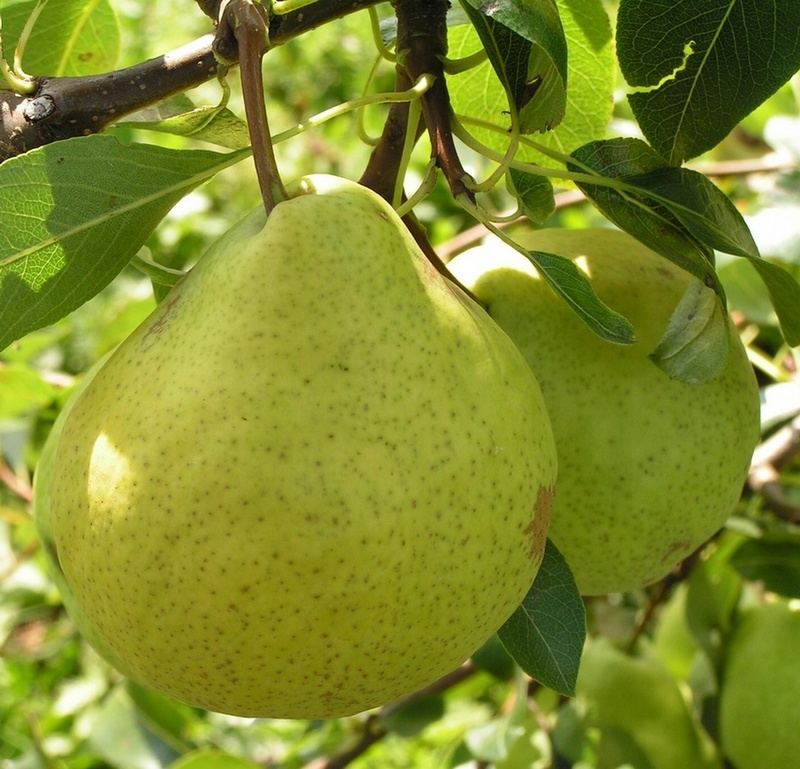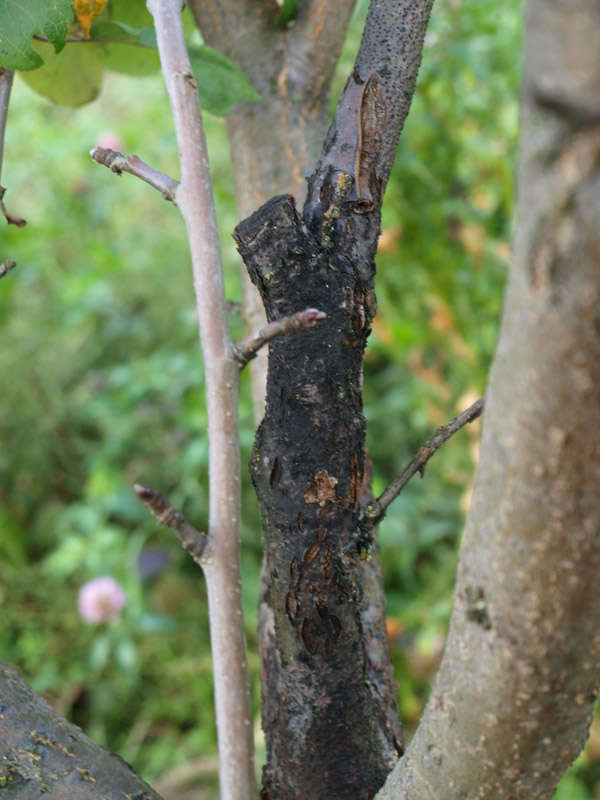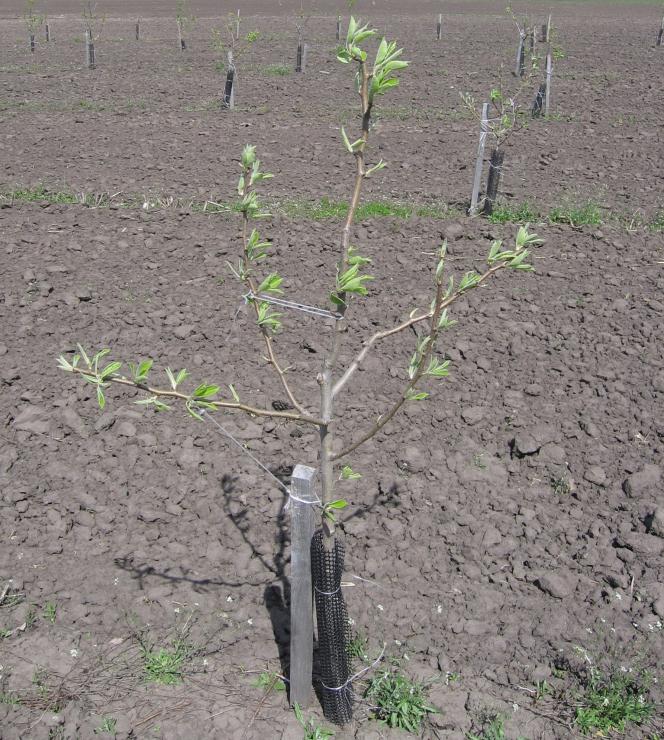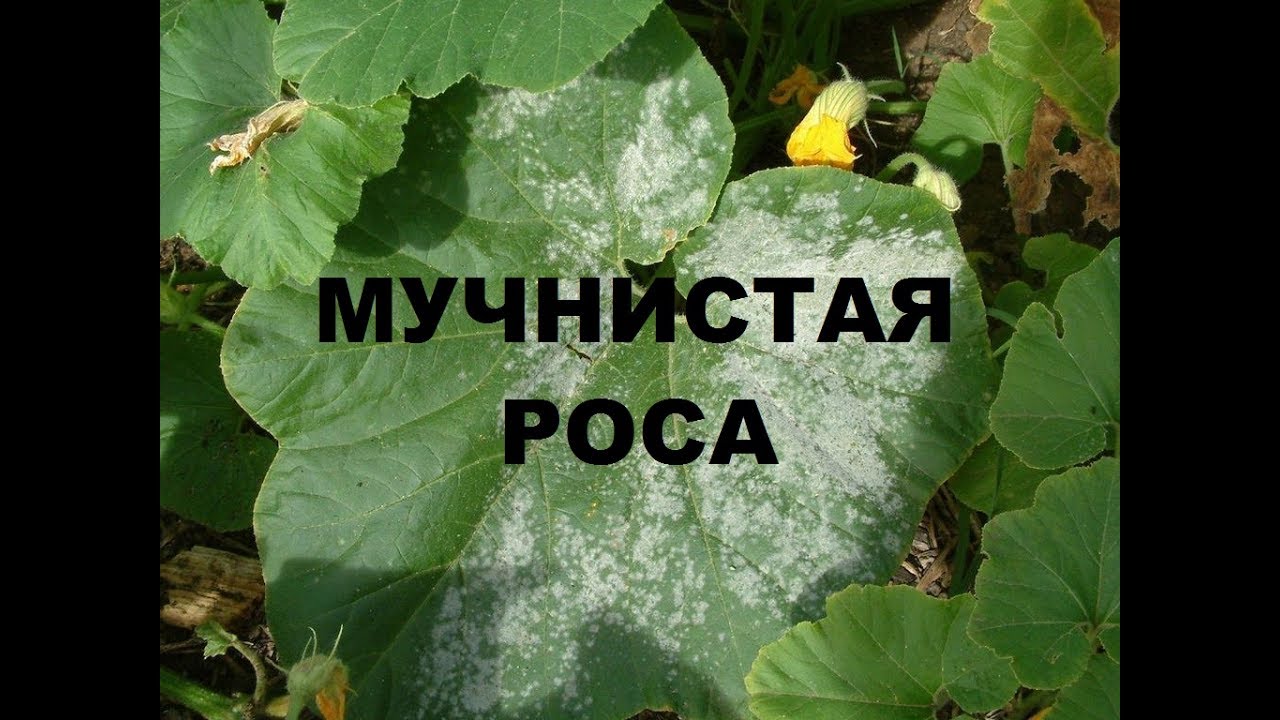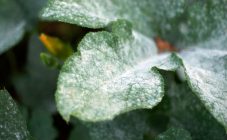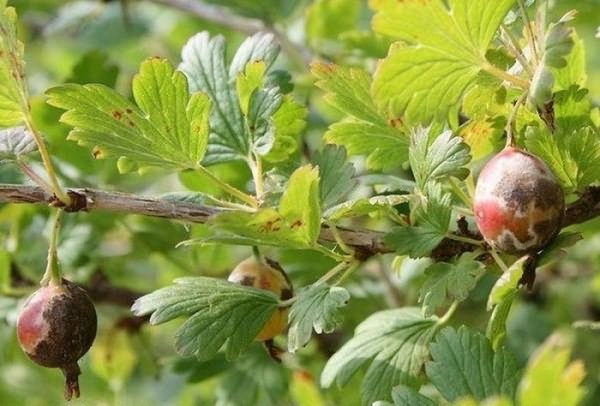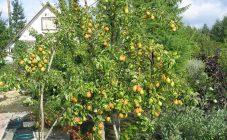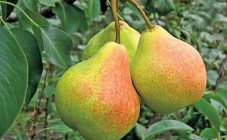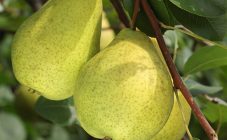Content:
Among the wide variety of summer pears, breeders especially note the Augustow dew variety. It is well suited for central and southern areas. It stands out among others for its advantages and excellent characteristics. The variety was obtained in the 2000s as a result of crossing the varieties Tenderness and Triumph. From "parents" he got cold resistance and great taste.
Description of pear variety August dew
The tree can reach a height of 3 m. The crown has an average density. The branches are straight, located at an acute angle to the trunk, forming a thick cap. The bark is smooth and gray in color. The leaves are dark, green, oval.
The pear is distinguished by abundant blooming of small white flowers. The ovaries are formed in early summer. August dew has low self-fertility, so the presence of a pollinator pear would be a good option for it.
Fruit characteristics
Pear fruits differ from other varieties in juiciness and large size. The average weight of one pear can reach 200 g. They all have the same size and classic shape, which is an important commodity characteristic. As they ripen, the fruits change color from green to yellow, sometimes there is a slight blush on the sides. Pear is famous for its smooth, thin skin with subcutaneous punctures. Despite the large weight, the fruit is firmly held on the branches by a thick peduncle. The pulp is white, characterized by fine grain and a small chamber for several seeds. The August dew pears have a sweet taste with a slight sourness and a fresh aroma. This is due to the high sugar content - up to 8.5%.
The fruits of this variety are suitable for fresh consumption and preparation with compote, jam and baby puree.
Medium ripeness variety. Harvesting opportunities appear from late August to late September.
Yield
Fruiting of trees begins at 3 years old. The first yield will be no more than 20 kg per plant. As they grow older, the amount increases to 200 kg per tree.
Disease and pest resistance
The variety tolerates frosts and sharp weather changes well. Despite damage (mechanical and frost damage), trees are capable of self-healing and greenery growth. The Avgustovskaya Dew variety is resistant to scab, but has no immunity to the following diseases:
- powdery mildew,
- mosaic,
- black cancer.
To combat ailments, preventive measures are needed so as not to lose the harvest.
Landing
Optimal conditions for growing August dew:
- The site should be light, without drafts and cold winds. An excellent option would be the south or southwest slope. A fence will protect you from the winds: a fence or dense crowns of neighboring trees.
- Swampy soil types and high groundwater levels are not suitable for planting.
- The soil should be loose and rich in humus. Good drainage is also important.
- The acidity of the soil should vary from 5.5 to 6 pH. High alkali levels will kill the plant.
Sapling selection
The purchase of a seedling for spring planting is carried out in the fall. The sprout should be no more than 2 years old.
When buying with an open root system, pay attention to the good development of the roots. They should not have growths and bumps, and the trunk and branches should be smooth and free of cracks.
In order for the seedling to easily endure the winter period, it must be dug in. How to do it correctly:
- Treat the roots of the seedling with a mixture of water, clay and mullein to protect it from drying out.
- Dig a hole: length - 100 cm, depth 40 cm.
- Cover the bottom with sand.
- Lay the seedling at a slight angle on the sand. The top should be on the edge of the pit.
- Sprinkle the roots with sand and cover with water.
- Before the first frosts, cover the seedlings with soil at the top.
Pit preparation
For permanent planting of a seedling, a hole is dug up to 1 m deep and up to 80 cm wide. Drainage is made in it and a nutrient mixture is added, combining peat, humus, sand and black soil in equal proportions. As fertilizers, 400 g of superphosphate and 2 tbsp. tablespoons of ash. The pit is completely filled and covered with moisture-proof material.
Planting a seedling
- Having dug a seedling dug in since the fall, you need to carefully examine it. If the roots are damaged, they are cut off.
- The roots are immersed in water with the addition of growth stimulants.
- A shelter is removed from the prepared pit and depressions are made in it.
- Stepping back a little from the center, they drive in a stake from a tree. The height of the support should be about 1 m. The planted seedling is attached to the peg with elastic material. Crushing of the bark must not be allowed.
- Around the tree, the soil is made out in a trunk circle.
- After planting, thorough watering is carried out.
- The central trunk is trimmed at a height of 80 cm. The branches of the seedling are also shortened by half.
- After a while, it is worth loosening and mulching. Humus, hay or sawdust are used as mulch.
Further care
Caring for a pear will not burden even a novice gardener, since it does not require complex agrotechnical techniques.
Watering
Watering the August dew should be regular. In the near-stem circle, the soil should be moist to a depth of 20-25 cm. If there is a lack of moisture, the tree will drop the ovaries and fruits. It is also important to prevent waterlogging and waterlogging of the soil. Watering should begin in the spring before the tree blooms. The regularity of watering is every 2-3 weeks. After watering or precipitation, the soil is loosened and mulched.
Top dressing
Lack of nutrients negatively affects the quantity and quality of the crop. Most often, a deficiency occurs at the 3rd year of the tree's life. Peat, humus, compost, nitroammofoska, urea and complex mineral fertilizers are used for feeding.
Pruning
In low-growing trees, they form a crown resembling a bowl. This shape makes it easier to care for and harvest.
The formation of the bowl is carried out in several stages:
- A year after planting the seedling, 4 branches are left on the tree, which will form the skeleton of the tree. They need to be shortened by a third.
- The next year, 2 sprouts are left on each of the main branches. The interval between them is 50 cm.
- In subsequent procedures, the length of the branches is made the same to prevent thickening of the crown. Also remove branches that grow inward.
Cutting is performed with a sharp sharpened tool. Before the procedure, it must be disinfected. For this, an alcohol solution, a solution of copper sulfate (1%) or hydrogen peroxide (3%) is suitable. Whole branches are cut into a ring. If the cut has a diameter of more than 1 cm, it should be cleaned with a knife and covered with garden varnish.
Prevention of diseases and pests
August dew has a high resistance to diseases, but do not forget about preventive measures:
- timely removal of weeds, leaves and branches,
- regular inspection of the bark for cracks and damage,
- whitewashing of trunks with lime,
- spraying the soil around the tree with copper sulfate.
- treatment with pesticides and fungicides.
Advantages and disadvantages of the variety
Benefits of August Dew:
- high yield rate;
- fruits have a balanced composition of useful elements that is suitable for baby food;
- the variety is not afraid of frost or drought;
- has resistance to scab;
- long-term storage of fruits;
- fruits are versatile.
Disadvantages of the variety:
- periodic fruiting;
- obligatory presence of a pollinator variety;
- with abundant fruiting, a large amount of carrion is formed;
- poor resistance to other diseases.
Pear August dew is a popular summer variety. It is preferred for its excellent taste and high yield. Also, trees do not require complex agrotechnical techniques, so even a novice gardener can get the first harvest.
